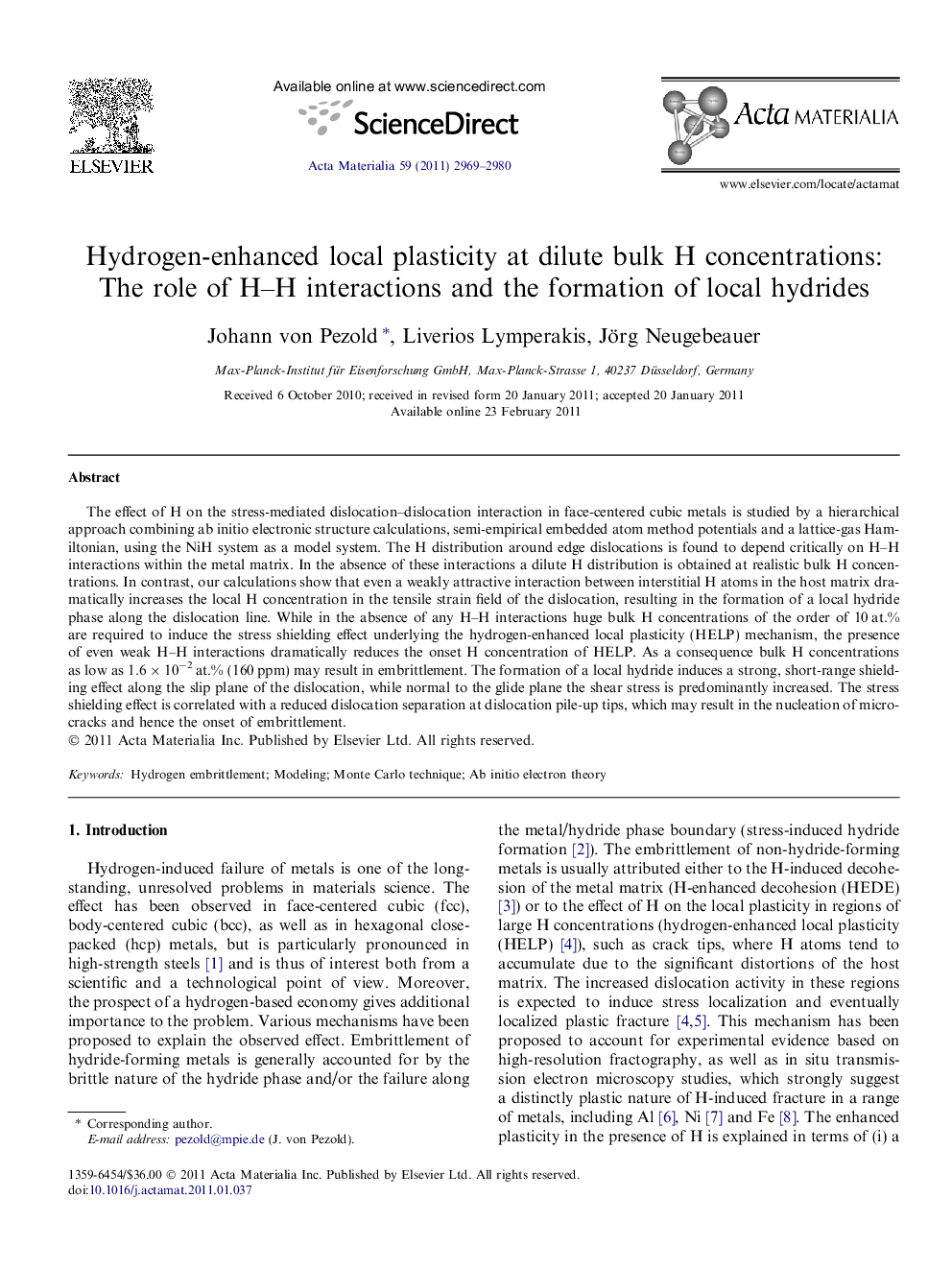| Article ID | Journal | Published Year | Pages | File Type |
|---|---|---|---|---|
| 1447180 | Acta Materialia | 2011 | 12 Pages |
The effect of H on the stress-mediated dislocation–dislocation interaction in face-centered cubic metals is studied by a hierarchical approach combining ab initio electronic structure calculations, semi-empirical embedded atom method potentials and a lattice-gas Hamiltonian, using the NiH system as a model system. The H distribution around edge dislocations is found to depend critically on H–H interactions within the metal matrix. In the absence of these interactions a dilute H distribution is obtained at realistic bulk H concentrations. In contrast, our calculations show that even a weakly attractive interaction between interstitial H atoms in the host matrix dramatically increases the local H concentration in the tensile strain field of the dislocation, resulting in the formation of a local hydride phase along the dislocation line. While in the absence of any H–H interactions huge bulk H concentrations of the order of 10 at.% are required to induce the stress shielding effect underlying the hydrogen-enhanced local plasticity (HELP) mechanism, the presence of even weak H–H interactions dramatically reduces the onset H concentration of HELP. As a consequence bulk H concentrations as low as 1.6 × 10−2 at.% (160 ppm) may result in embrittlement. The formation of a local hydride induces a strong, short-range shielding effect along the slip plane of the dislocation, while normal to the glide plane the shear stress is predominantly increased. The stress shielding effect is correlated with a reduced dislocation separation at dislocation pile-up tips, which may result in the nucleation of micro-cracks and hence the onset of embrittlement.
